IB UOI and Japanese Class for Elementary Students Vol.1 at CGK International School
At CGK International School, the Japanese language classes for our elementary school students incorporate essential units from MEXT-approved textbooks while utilizing various learning resources to engage in inquiry-based learning. The following is an example of how we combine these two to have Japanese lessons in an IB classroom.
The second-grade students were looking at the central idea that, "Literature can shape individual beliefs, values, and culture." This was based on the UOI, "Who We Are".
Some common questions that the students had were "What is culture made up of?", "What is the role of literature?", and "How do individuals perceive when they hear oral literature or read written literature?". These questions were related to their close study of "The Hare of Inaba" and the "Becoming a Storyteller" unit in their Japanese language textbook.
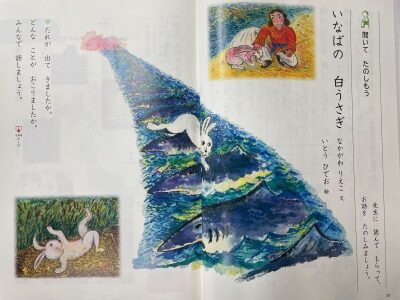
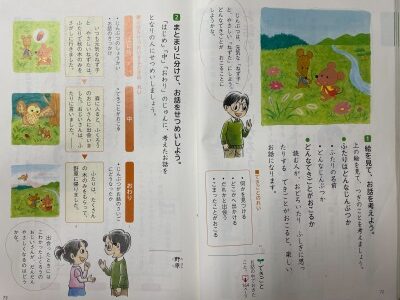
Culture, Values, and Beliefs
Using mind maps, the students mapped out their responses to the question, "What does culture consist of?" After looking and discussing everyone’s responses, the students came up with a response that summarized everyone’s ideas: "Culture is something that is created by people and continues to be passed down." Another takeaway from their discussions was that not only does each country or region have a different culture, but each person has a different culture too.
In the next lesson, we looked at values, one of the elements that makes up culture. After going over the definition of values, the students had a chance to reflect on the values that are dear to them and rank them. Some of the personal values that the students came up with were kindness, responsibility, curiosity, critical thinking, cooperation, empathy, perseverance, courage, and courtesy. Through this activity the students were able to connect their discussion to their "Who We Are" UOI.
In the following lesson, the students looked at beliefs, another element which makes up culture. The students began by looking at various pictures and listening to their classmate’s reactions to them. These pictures included a clown, mathematical formulas, vegetables, a rocket, a dog, and more. The students’ responded to these images with a variety of responses such as scary, cute, cool, and dislike.
We compared their own reactions with those of others and discussed the reasons why people feel differently about the same objects. Through these discussions, the children realized that their beliefs were influenced by factors such as the environment that they grew up in, movies that they watched, and their personal preferences.


Oral and Written Literature
"The Hare of Inaba"
Realizing that culture is something passed down through generations, the students became interested in storytelling and books as one of the ways that culture gets passed down. Therefore, they decided to closely look at "The Hare of Inaba", the mythology unit in their textbook. Originating from the Oki Islands in Tottori prefecture over thousands of years ago, the story intrigued the students who were curious about why and by whom this story had been passed down. In their quest for answers, the children looked up dictionaries and, for the first time, came across the term, oral literature. This discovery opened up their understanding of Japan's traditional linguistic and cultural heritage.
Moreover, the students compared and contrasted the characteristics of oral and written literature, such as The Kojiki (an ancient Japanese historical and mythological record). They delved into the advantages and disadvantages of each form and from that the students were able to reach some conclusions. They found that oral literature requires many people to pass it down, or else the culture might disappear. Similarly, written literature requires people to physically produce it. The students also found that oral literature can be enjoyed even among those who are illiterate, whilst written literature can be accessible to deaf people because it is a visual medium. However, if you cannot read what’s been written then you cannot enjoy it.
Summarizing their inquiry, the students arrived at the conclusion that their role is to continue passing on the literature which underscores the importance of preserving and passing on cultural narratives.
Folktales, Fables, and Fairy Tales from Around the World
After looking at an example of Japanese mythology, the students moved on to folktales, fables, and fairy tales from around the world. They read Aesop's fables such as "The Ant and the Grasshopper", the fairy tales "The Golden Goose" and "The Elves and the Shoemaker" collected by the Grimm Brothers and "The Crane's Return of a Favor" from Japan. They pondered the morals these stories conveyed and the countries from which they originated.
In exploring fairy tales, for instance, they compared Disney’s "The Little Mermaid" with its source by Hans Christian Andersen. By noticing the differences of the times when these versions were respectively released and the values that they tried to convey, the students discovered that the culture of the country where the story originated significantly influenced the story. Reading these tales strengthened their understanding that stories serve as a means of preserving and passing on the culture of these countries.

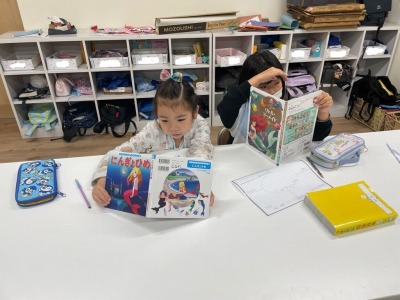
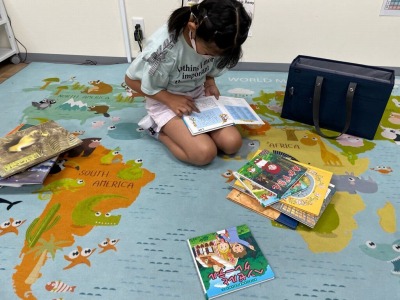
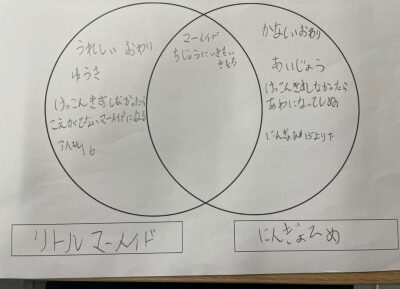

"Let's create stories that can be told for generations to come in the times ahead."
"Becoming a Storyteller"
Finally, the students used the unit "Becoming a Storyteller" from their textbook to summarize what they learned in this UOI. They set out to create their own fables or fairy tales that conveyed the values and morals that were important to them.
Having explored various forms of literature throughout the UOI, the children applied what they had learned and discovered in their own tales. Having a deep understanding of the characteristics of fables and fairy tales, they carefully considered what form their stories should take. Utilizing their imagination, they brainstormed the necessary elements and structure for their stories which provided them with a platform to create their own original stories.
This creative process allowed them to not only appreciate the rich world of literature but also to become creators and find their voice as storytellers. It reinforced the idea that storytelling is a powerful medium for conveying values and life lessons.
In terms of the aspect of writing in language proficiency, the children approached their work with the following considerations:
- Structuring their stories with a beginning, middle, and an end.
- Dividing their writing into proper paragraphs.
- Correctly using the は (wa), を (wo), and へ (e) particles.
- Correctly using punctuation marks such as periods, commas, and quotation marks.
- Writing clearly and in detail so that the message can be conveyed to the reader.
- Proofreading and editing their own writing.
Throughout the process of exploring various forms of literature, the students applied what they had learned and discovered. This allowed them to immerse themselves in the creation of their stories at their own pace. During the presentation of their completed stories, it was clear that they respected each other's values, beliefs, and learning while considering what values and morals they wanted to convey as storytellers.
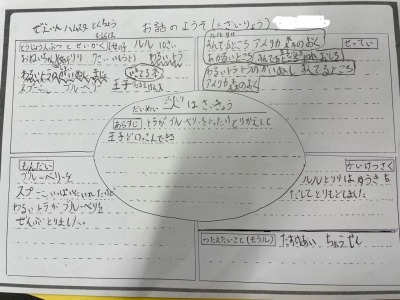

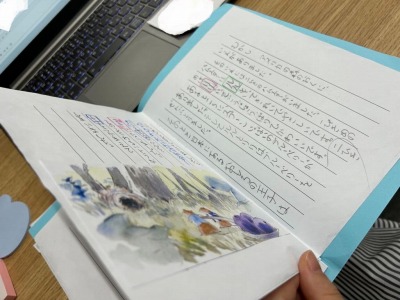
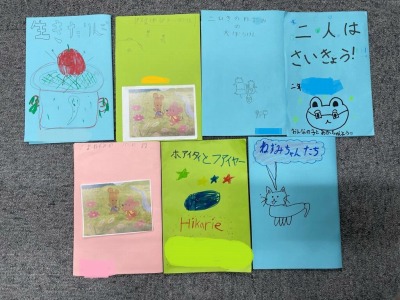

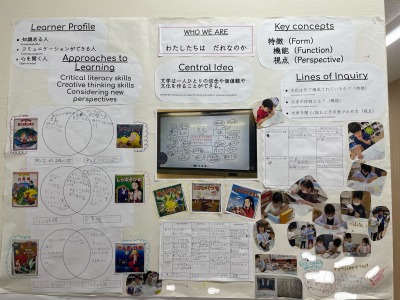
Connecting to Prior Learning
After this UOI ended, the students were able to demonstrate the learning that they had achieved during this UOI by making connections with new learning experiences, even though a significant amount of time had passed. For example, when discussing the meaning and usage of the newly introduced kanji character 語 (translated as "word" or "language"), one student commented, "You can use it in a sentence like "語り続けていく." Translated, it means "to continue telling stories orally." This demonstrates that this student had a solid understanding of the meaning and function of "口承文学" (oral literature) and the ability to use the term appropriately.
In another example, a student created a haiku during their UOI activity. The haiku read:
七夕は
日本の文化
楽しいな
Tanabata is
Japanese culture
And it is so fun.
They reflected by saying, "I want to let future generations know about Japanese culture." This shows that the student continues to have an understanding about culture as well as their role in passing down Japanese culture.
These examples highlight how the lessons learned during this UOI continue to influence the students’ thinking and allow connections to form with new learning experiences. In this way, during their Japanese lessons the children are continually broadening their horizons beyond their textbooks. They make connections with prior learning while developing their skills in writing, reading, speaking, and listening.
We will continue to create a learning environment that allows each student to explore their interests and passions, whilst ensuring that their learning is not confined to the content of textbooks alone. We will also help them acquire the knowledge and skills outlined in the elementary school curriculum guidelines as set by MEXT.
Author Profile
-

-
Sayuri - IB PYP/MYP Japanese Teacher (Japan)

IB PYP/MYP Japanese teacher of CGK International School.
Master's degree in Educational Technology, Western Michigan University.
While conducting research in her field of expertise to review ICT education in Japan and the curriculum review of the School of Education, she has also published research papers with a German publisher.
Two years teaching Japanese at Western Michigan University and five years teaching Japanese to Japanese students at a school in New York City.





















